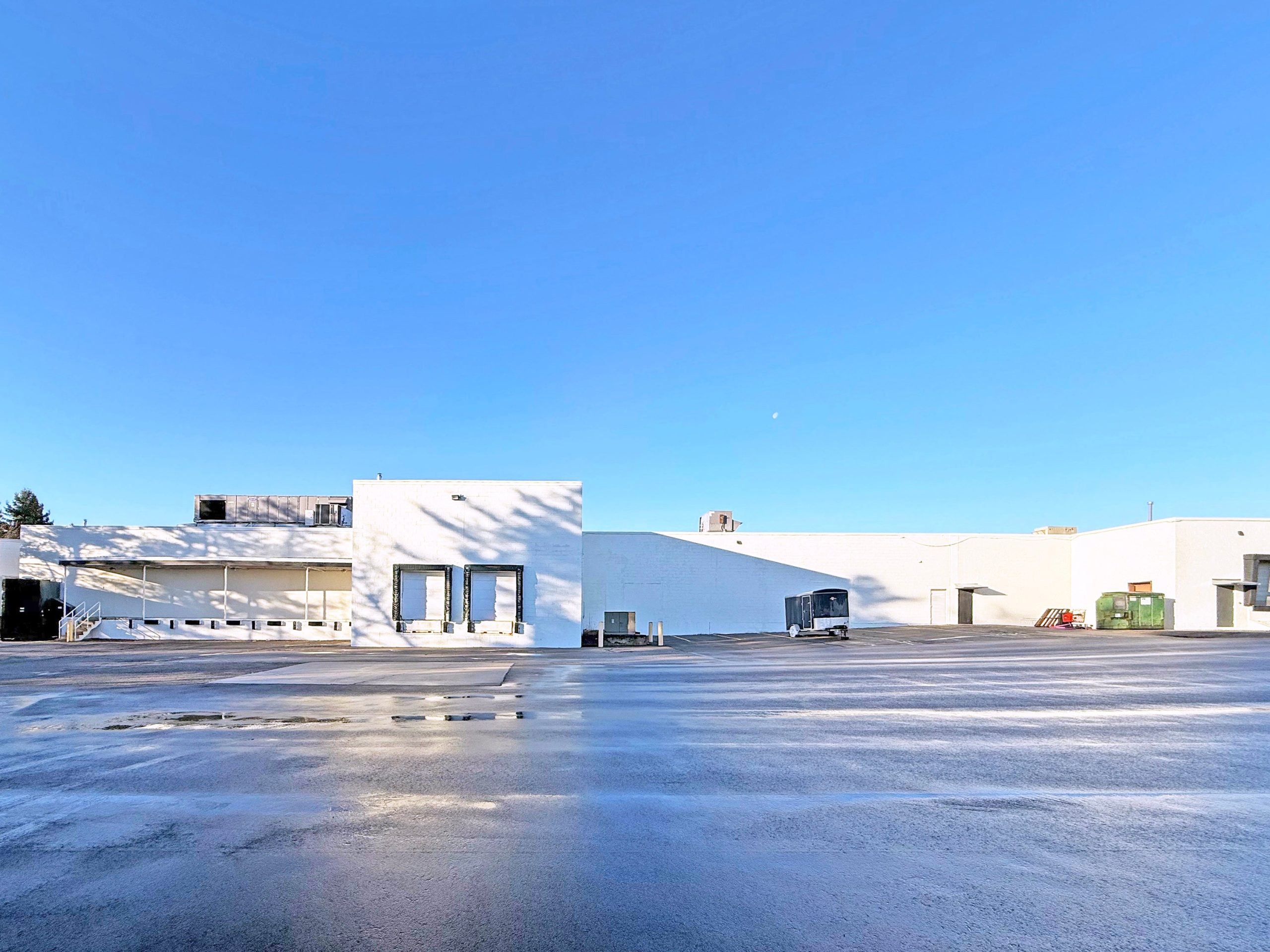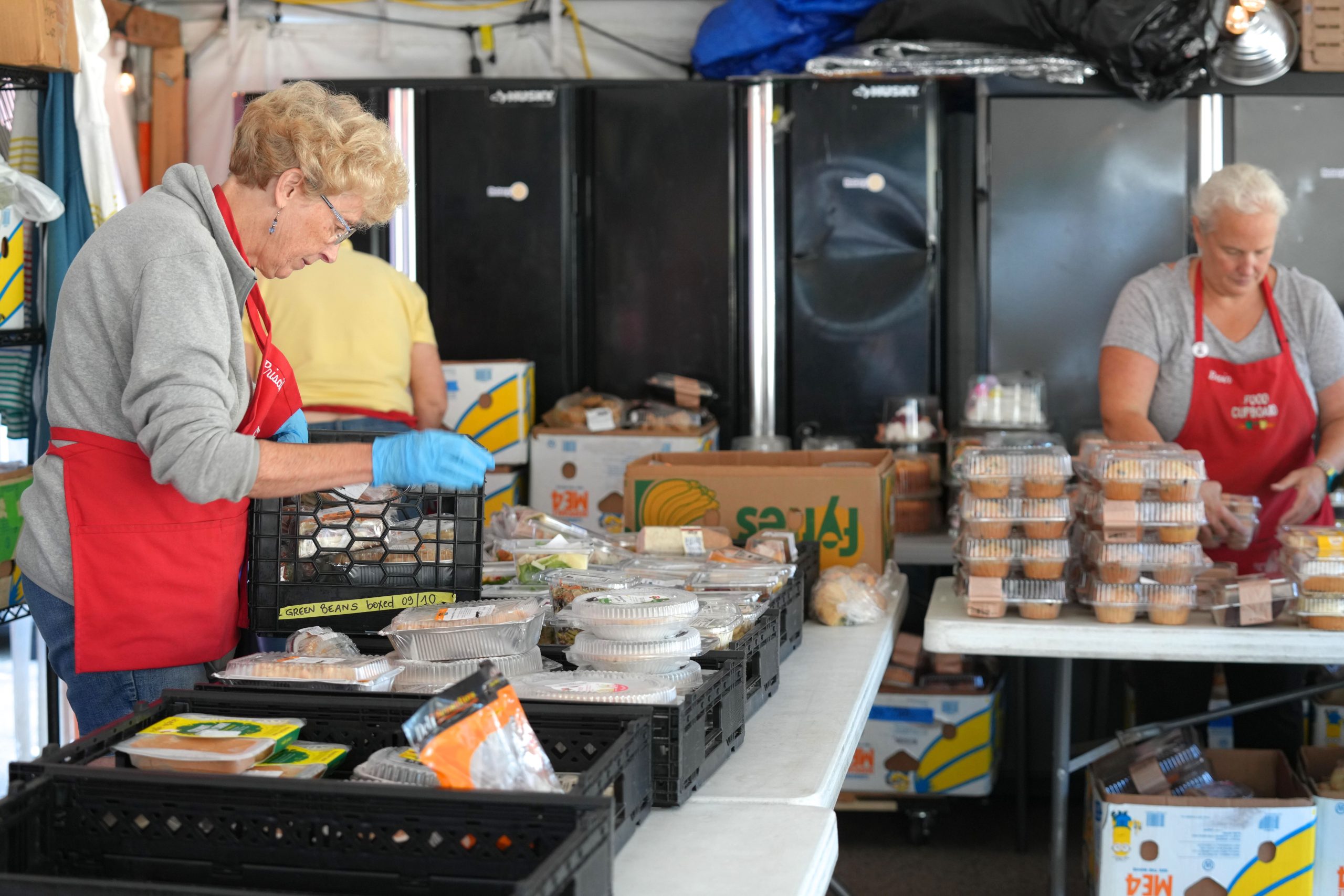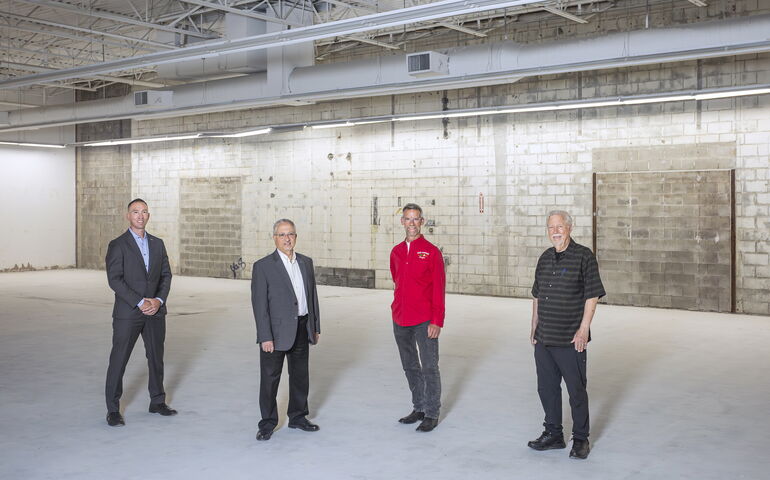After four years of looking, the South Portland Food Cupboard finally found the right space to double its size and meet growing demand.
The nonprofit leased 8,500 square feet at 443 Western Ave. in South Portland from Jetport Plaza LLC.
Justin Lamontagne and Greg Hastings of the Dunham Group brokered the transaction.
The space is a rear warehouse on the back side of the Jetport Plaza. It has two loading docks and is less than a mile from I-95. There’s an exterior loading platform, temperature control throughout and slab flooring.

The rear warehouse is part of a larger 100,982-square-foot building dating back to 1982 and renovated in 2005 and 2024. The building formerly housed the Burlington Coat Factory.
Lamontagne said the transaction was notable for a couple of reasons — an important nonprofit doubling in size and service for the community and a repurpose of the backside of an old retail store.
The plaza’s owners, Martin Rist and his wife Bonnie Brunet, “went above and beyond to make it happen,” he added.
1M pounds of food
The South Portland Food Cupboard was started in 1997 by a group of people from Holy Cross Church and operated out of St. John the Evangelist Church in South Portland.
In 2001, the pantry became a nonprofit and hasn’t had a formal business connection with the church since then, but continued to use the space for free for 11 years.
In 2013, St. Johns closed down and the pantry moved into a double warehouse at 130 Thadeus St. in South Portland.
The cupboard organizes volunteers for the acquisition and distribution of food to people throughout South Portland, Portland, Cape Elizabeth, Scarborough and surrounding communities in Cumberland and York counties
Last year, it had 21,992 onsite recipients and distributed just over 1 million pounds of food. Projections for next year show the numbers will likely go up.
‘Big enough for a while’
At 130 Thadeus St., the pantry has about 4,000 square feet of space.
“It was big enough for a while,” said Richard Borrelli, president of the pantry’s board of directors. “Then covid hit and demand rose, increasing the volume of recipients.”
The pantry has four part-time employees and roughly 150 volunteers who come during the week.
“We could not do any of this if it weren’t for that volunteer labor,” he said.

As demand rose, it became apparent more space was needed. Initially, the board looked at buying a facility.
“It became very obvious in the process that everybody who had property worth looking at was hanging onto it,” Borrelli said.
Search criteria included having enough level floor space at grade to make it easier for elderly and handicapped volunteers and recipients to get in and out, adequate parking, reasonable traffic flow, and some level of discretion.
“This is a very discreet location. It’s got its own access point,” said Borrelli.
The landlord is building out a small amount of office space and barrier-free restrooms with changing stations, he said.
Borrelli credited Lamontagne for his persistence in bringing them options.
“At any given time we had one on deck and at least one that was an alternate, thanks to Justin,” he said.
He added, “It’s become ever more apparent that the man has a big heart and a soft spot for nonprofits.”
He credited the landlord for their support as well.
“The landlord emailed me and said, ‘Our family foundation would like to make a significant donation to the food cupboard,’ and they did,” he related. “That’s not something we take for granted. We are ever so fortunate that we have a generous community that continues to give. And we’re going to continue to need it, given the consistent increase in recipients month over month.”
The pantry uses social media to encourage donations of food and money, he noted.
Digital ordering
The pantry’s space is part of larger warehouse area of about 50,000 square feet. Before the pantry can move in, construction is needed to separate the spaces and to perform electrical work.
“I suspect it will be late autumn by the time we get in there,” said Borrelli.

The landlord is handling a major portion of the construction while the pantry is putting together a budget for the electrical work and for purchasing new equipment that will allow it to have a digital ordering system rather than pen and paper. Recipients will be able to order what they need online and schedule a pickup window of time, which will help the pantry avoid having dozens of cars lined up. The digital system could be ready to go by August at its current location.
Other new equipment will included a walk-in freezer and cooler to store orders prior to pick-up.
Running on an annual budget of about $500,000, financing in general comes from money and food donations and grants. Food comes from the Good Shepherd Food Bank’s regular distributions, along with Hannaford supermarkets.
Financing for the new equipment and the pantry’s share of the infrastructure work is mostly taken care of.
“We’ve found that just mentioning it to the community, a great portion, if not all, of the equipment is paid for,” said Borrelli. “It’s stunning. I’m continually impressed by this community.”
